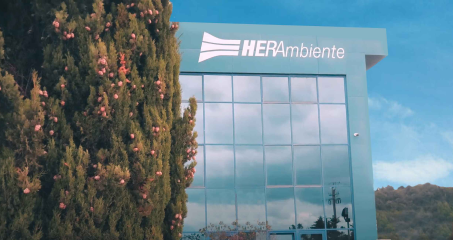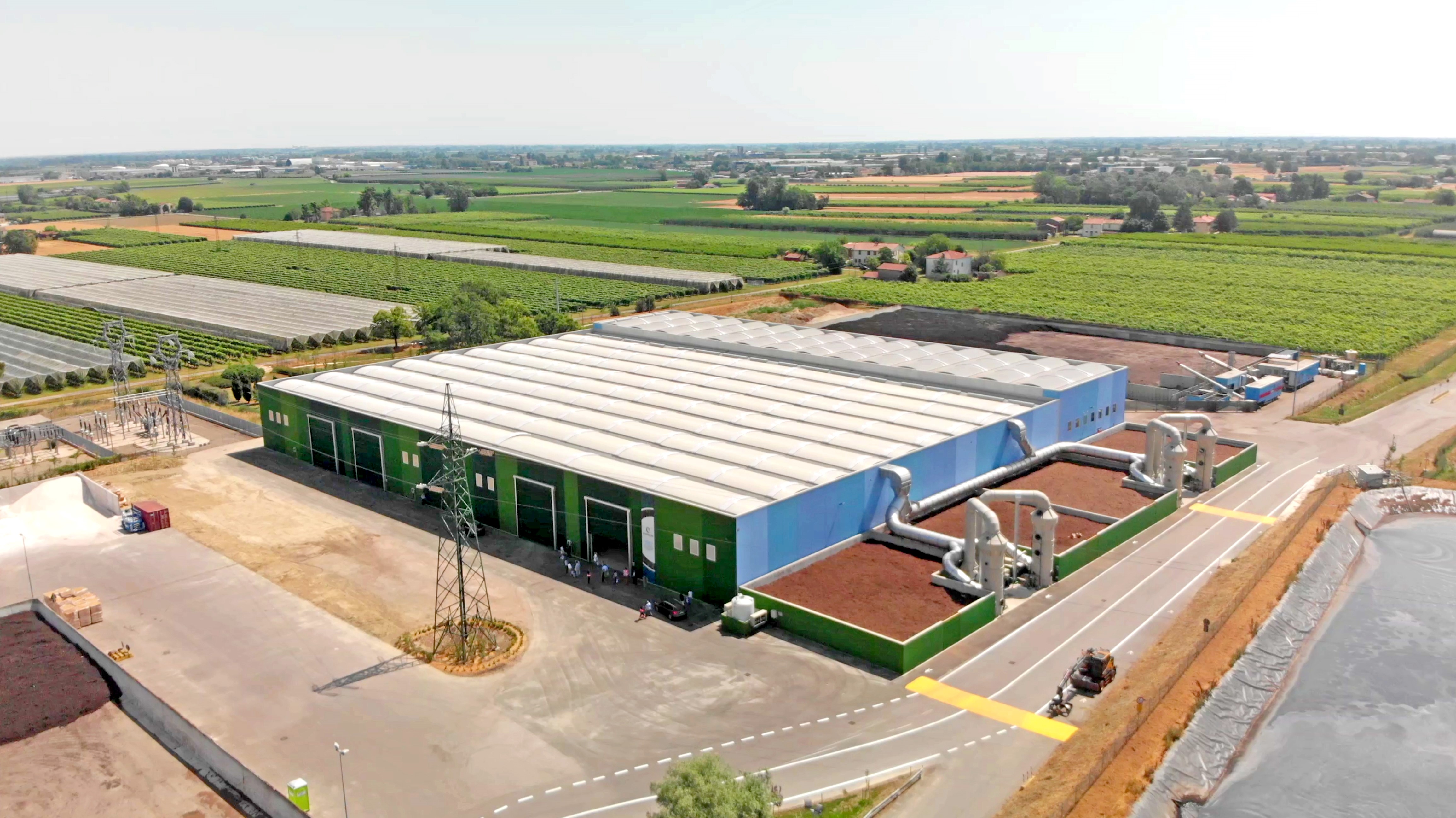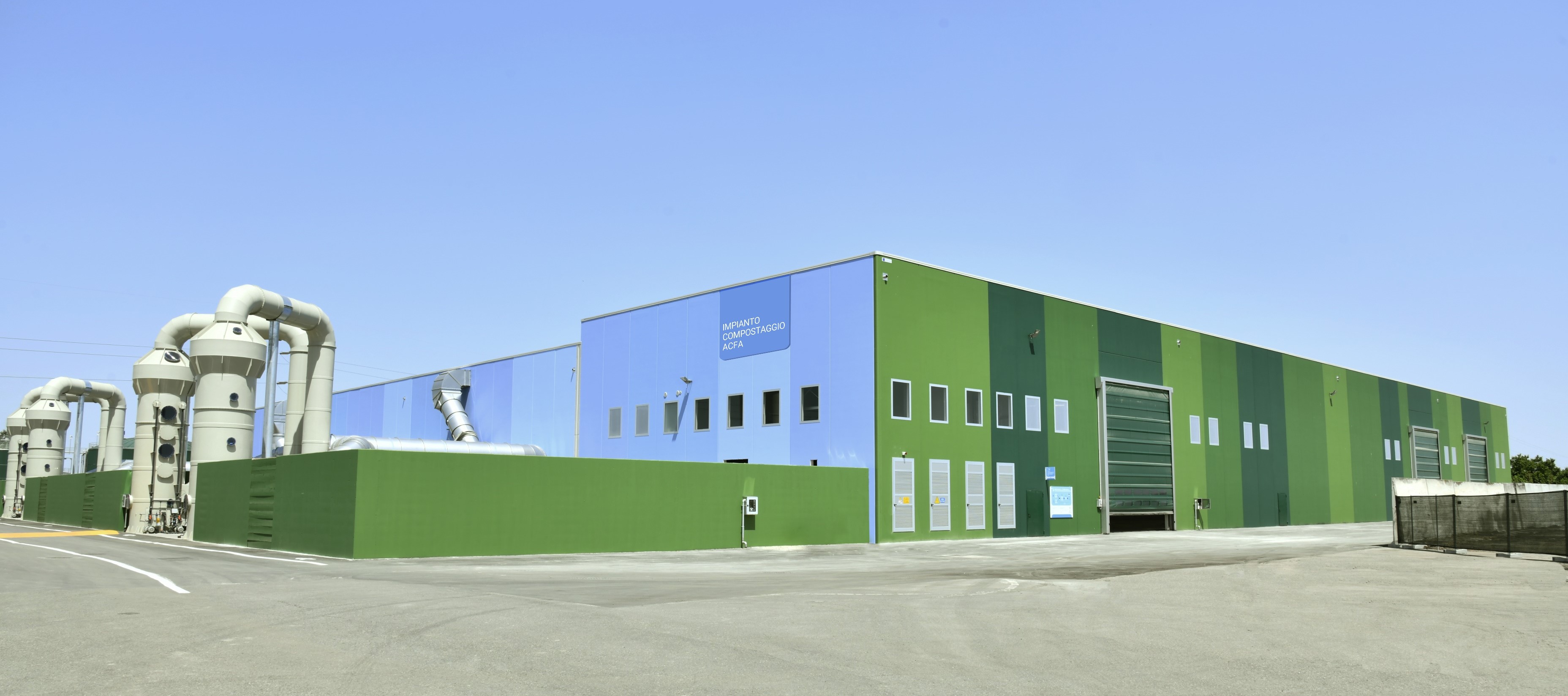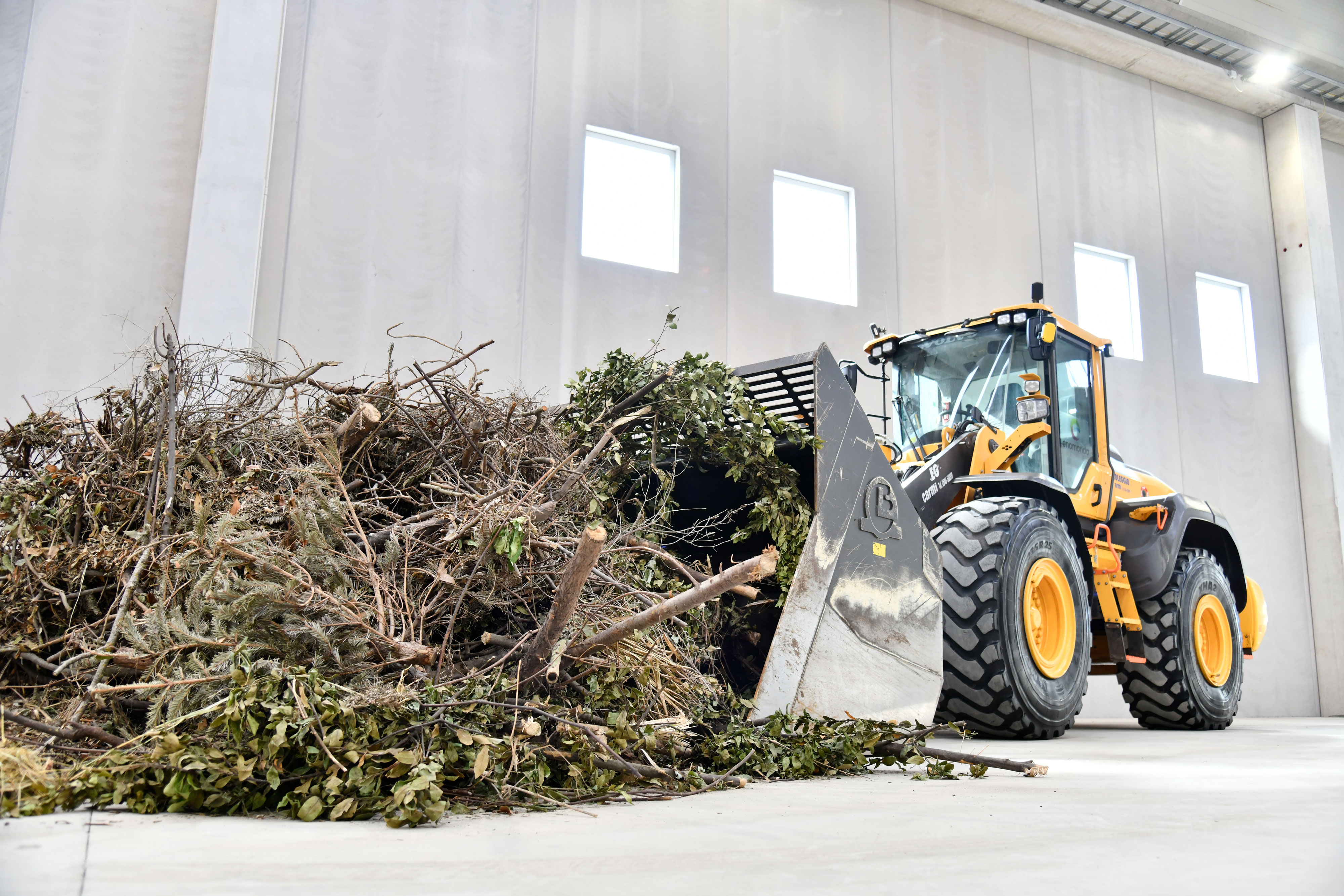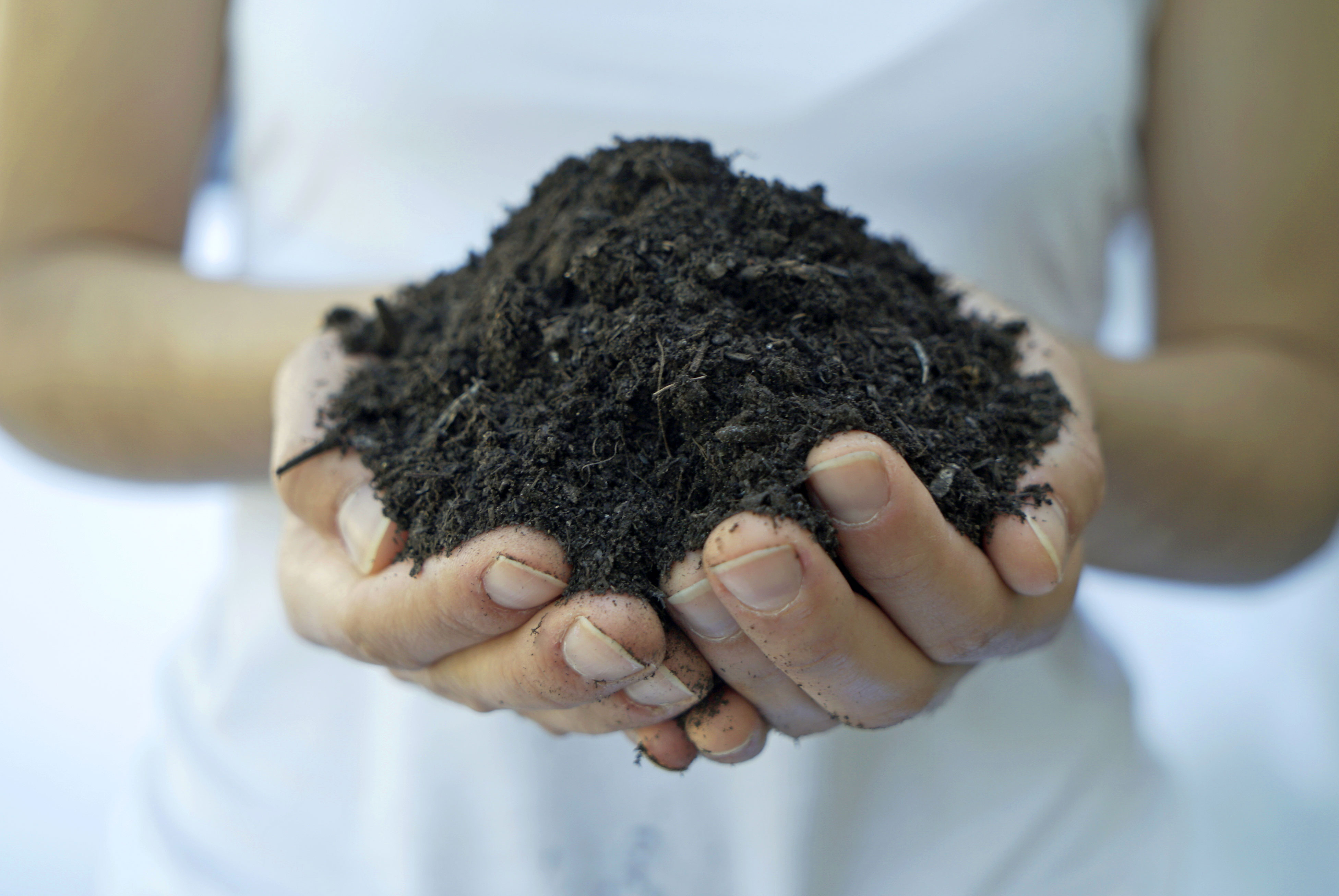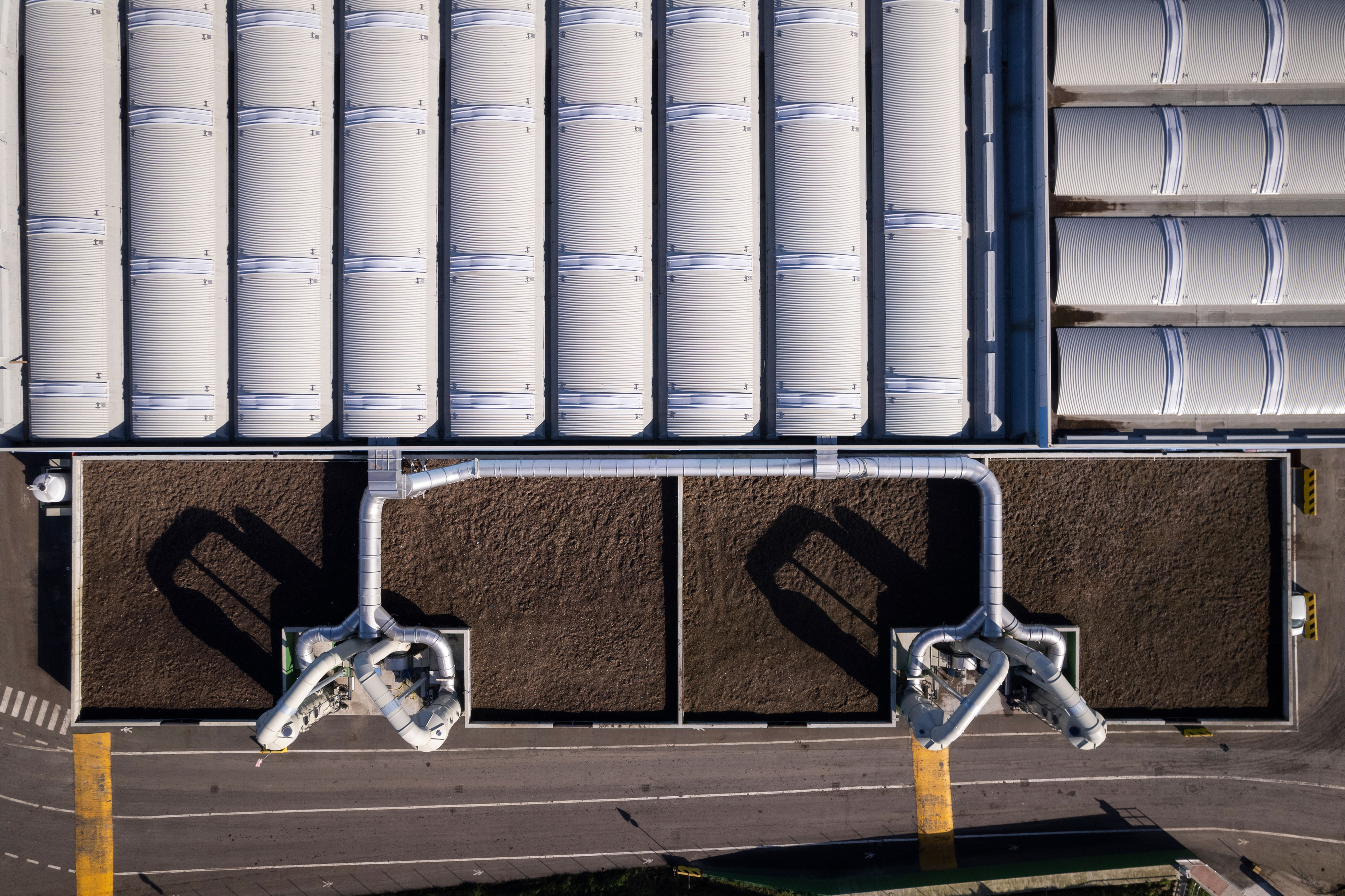Overview
Operating since 1995, the Faenza composting plant primarily processes plant waste, namely the lignocellulosic fraction from public and private green space maintenance, as well as agri food waste and agro industrial sludge.
The plant is located in Faenza (RA) at Via Convertite 6, within the Caviro Extra site, and performs the biological treatment of waste through bio oxidation in fermentation windrows. The process produces Green Composted Soil Conditioner (ACV Econat), Mixed Composted Soil Conditioner (ACM Econat), and Composted Soil Conditioner from Agri food Chain Waste (ACFA Econat).
ACV Econat, permitted in organic farming, is obtained from lignocellulosic raw materials, namely residues from the maintenance of public and private ornamental green spaces;
ACM Econat, permitted in organic farming, is produced from grass clippings and prunings, plant waste, and agro industrial processing waste. It is currently available in pellet form for field application with a standard fertilizer spreader or for horticultural use.
ACFA Econat is obtained from grass clippings and prunings, biodigestate from the anaerobic digestion process for biogas production, and agri food sludge. It is a compost specifically designed for use in conventional agriculture on extensive crops and orchards.
The natural soil improvers produced by Enomondo are ideal for improving soil structure: they significantly reduce the use of chemical fertilizers by adding organic matter to the soil. They have hygroscopic properties, bind CO2 in the soil, and return nutrients to the plants. A process that, thanks to the presence of nutrients such as nitrogen, phosphorus, and potassium, stimulates the growth of beneficial microflora, making the soil more resistant to drought and desertification, as well as improving the development of the root system of the plants grown on it.
Forms
-
Treatment capacity
80,000 tons/year of incoming grass clippings and prunings for the production of Green Composted Soil Conditioner and combustible biomass. <br><br>130,000 tons/year of agri food waste and sludge, and grass clippings and prunings, for the production of Mixed Composted Soil Conditioner and Composted Soil Conditioner from Agri food Chain waste.
- Disposal of grass clippings, prunings, and agro-industrial waste;
- Mixing of different matrices according to regulations for the various types of soil improver;
- Thermophilic Phase - Bioxidation in beds periodically turned by a pile turning machine, which, thanks to the fermentation process, ensures the development of humic and fulvic acids. During this process, temperatures are maintained above 55°C for several days, ensuring product sanitization;
- Curing Phase - The soil improver is left to mature in piles until it is fully stabilized;
- The resulting products are screened, resulting in organically stable, pathogen-free soil;
- The Mixed Composted Soil Conditioner and the Green Composted Soil Conditioner are permitted for use in organic farming and meet the quality compost specifications of the Italian Composting Consortium (CIC). The Composted Soil Conditioner made from waste from the Agri-food Chain, also bearing the CIC quality mark, is intended for use in conventional farming.
Documents of the facility:
1480Kb - zip
869Kb - zip
20Kb - docx

